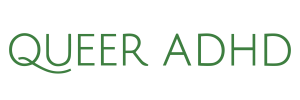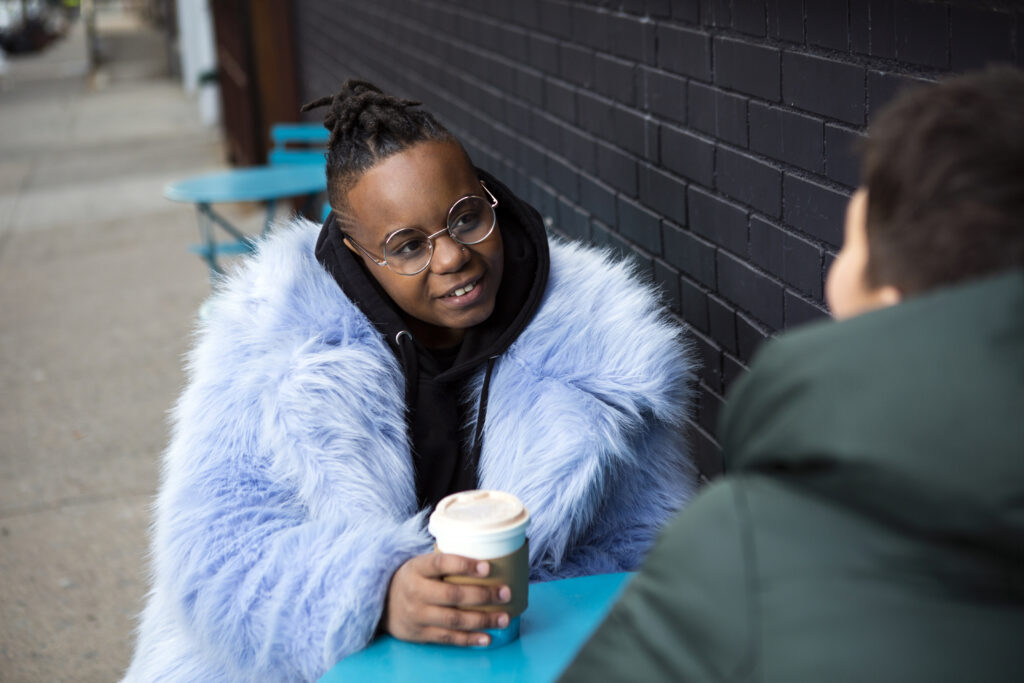Hi there! I hear you’re a queer person who just discovered you have ADHD. Welcome! I’m excited to officially welcome you to this rather specific—and specifically wonderful—club.
Are you feeling a lot of things right now? When I finally understood that the way my brain functions is consistent with ADHD, I had All. The. Feels. This is very normal—you’re adding another lens through which you can understand and support yourself in every facet of your life. That’s big stuff, and big stuff tends to bring along big feelings. If overwhelm is somewhere in the mix for you, I want you to know, right now, that this is going to be okay. You are going to be okay. Here are some very simple things that you can start doing today to begin caring for your ADHD brain.
Step 1: Take a breath
Unclench your jaw, drop your shoulders, take one deep breath in, and one deep breath out. Learning you have ADHD is great news—it’s an immediate doorway to explanations, strategies, and relief. You’re about to learn that you’re not alone, that your brain makes sense, and that there are many things you can do to function better and feel better.
But you also really need to go easy on yourself. This is a lot to take in, and it’s going to take time—in fact, it will be very similar to the time it took for you to fully understand and express your gender and your sexuality. Finding out exactly who you are and becoming really comfortable with it is a process. In order to become friends with your ADHD brain, you’ll need to unlearn a lot of old messages and get curious about what is genuinely true for you.
The beauty and challenge of ADHD is there are enough high-level patterns for us to share tips and guides, but every person’s experience is unique. For those of us in the Rainbow Alphabet, it is sadly also common for us to be dealing with anxiety, depression, PTSD, and other factors that affect our focus, and these can be difficult to isolate from our ADHD. You’re going to need to hone the skill of pausing and checking in with yourself to find out what’s true for you.
Fortunately, pausing is also a key strategy for managing attention, focus, impulsivity, and hyperactivity, so let’s begin practicing it right now. If meditation sounds terrifying or focusing on your breathing causes panic, don’t worry. All you really need to do is tune in to your senses for about ten seconds. What do you hear? What do you see? What do you feel? This will help you recenter yourself so you can consciously choose your next action.
You are safe, you’re exactly where you need to be, and you’ve got this.
Step 2: Start a collection of what works for you
Take a break from focusing on what’s hard, and start observing what tends to go well for you. What times of day do you focus best? What tasks feel really satisfying? What helps you learn? How do you get started on tasks? What events in your life have made you feel the most capable, the most proud of your abilities, and the most authentically yourself?
By “observe,” I don’t just mean “make some mental notes.” I want you to actually write these down. Pick a place where you can record what you learn about yourself. Maybe a new notebook would feel like a nice treat—pick out one that feels inspiring to look at, and make it your designated space. Or perhaps create a new section in your note-taking app, or download a new app altogether. The key is that it will be accessible to you when you need it, and you will remember that this is the place where you write down what works for you. (Personally, I use a running list in Evernote.)
The other thing I want you to do with these observations is edit out your self-criticism. Start genuinely honoring what you’re good at without apologizing for what you’re not. Clarify your gifts, your strengths, and your most effective strategies. We have so many negative messages echoing in our brains about not being good enough, smart enough, or motivated enough, and the fastest way to quiet them down is to load up on evidence that we are capable. Keep the messages positive and clear.
This process starts with simply paying attention and looking for your strengths, even if what you notice seems small. Maybe you’re really great at making someone laugh on a hard day. Maybe you can load a dishwasher like the perfect game of Tetris. Maybe do your best creative work at midnight. Write it down.
Step 3. Learn about your ADHD
Learning more about how your brain functions may seem like an obvious next step, but there’s a trick to it. You need to learn about your own brain using a method that actually works for your own brain. If you’ve picked up the belief that you’re “bad at learning,” then you’ve probably had some discouraging experiences of not learning the way you expected to. The truth, though, is that you learn in ways that are unique to you, and it’s your job now to identify those ways and use them.
Here are some examples to consider, both for how we receive new information and how we engage with it. Which ones resonate with you? What adjustments make them more effective for you? What other ways have you been able to learn that aren’t on this list? Do you need a combination of methods?
Receiving new information…
- Reading – Do you need a quiet place with a physical book? Do ebooks feel good on your phone, or do they need a tablet? Is it easier to read an Internet article if you reduce the ads and browser tabs first? If reading is your jam, try checking out the book ADHD 2.0, or the many free online articles at ADDitude magazine. You can also find a more personal blogging perspective at Black Girl Lost Keys, Let’s Queer Things Up, and of course, the Queer ADHD Blog.
- Watching – Maybe your eyes and ears want to work together. Does watching a video feel best? Try starting with the How to ADHD YouTube channel or Catieosaurus’s super quick and well-researched ADHD videos on TikTok—then keep browsing the suggested videos and hashtags.
- Listening – Does it feel like a breath of fresh air when someone verbally explains a topic to you? Try listening to an ADHD education podcast like the ADHD Experts podcast, or Catie and Erik’s Infinite Quest. You can also convert any of the “Reading” or “Watching” suggestions above into an auditory learning experience by finding the audiobook, playing YouTube videos with the screens off, or using text-to-speech tools to read books and articles to you.
Staying engaged and making sense of the information…
- Writing – Do you need to restate what you’re learning in your own written words? How about in pictures or illustration? Do you take notes while receiving info or prefer to summarize it afterward? Do you like pens or computer keyboards? Does color-coding help?
- Speaking – Do you need to say a thought out loud in order to hear what you’re really thinking? Will a new concept fully sink in after you explain it to someone else?
- Moving – Do you need to be walking while you listen? How about using a fidget toy while you read? Can you focus on new info best while on an exercise machine?
- Feeling – Do you need to feel positive and emotionally connected to the material before you can really connect with it?
- Body Doubling – Do you need another person present in the room (or on Zoom) to help you stay engaged until you’ve made it through all of the new information? (“Body doubling” is a term you’ll keep hearing in the ADHD scene because it tends to work well for us.)
- Processing info in the background – Do you need to sleep on new information—or let it roll around in the back of your mind while you go for a walk or take a shower—before it “clicks” and makes sense?
- Grasping the big picture – Do you need to collect all of the pieces and relate them to each other before you fully understand the material?
The good news is that all of these options and more are available to you—it’s just a matter of trying them on, seeing what fits, and letting go of the ones that don’t suit you. (Tip: If listening, watching, speaking, feeling, and body doubling are all on your list, consider getting some of your ADHD education from our Queer ADHD Group Sessions. These are one-hour live Zoom meetings with an ADHD coach and your fellow LGBTQIA+ community members where we focus on education and supporting each other.) As you learn about ADHD, one of the most valuable things you can do is stop trying to gain this knowledge through the ways that you feel you should learn. Instead, start to identify the ways that you do learn, and embrace them.
Step 4. Start connecting
Find other folks who are in the same boat as you. I can’t say this loudly enough—you are NOT ALONE. (You know something is important when the all-caps come out!) There are lots of free Facebook groups for connecting and sharing ADHD resources. Talk with your friends and your chosen family, and find out how many of them have ADHD as well. And if you’re in touch with your biological parents or siblings, this is a great topic to bond over. Statistically, there’s a solid chance that some of them have ADHD, too.
The work ahead is wonderful. It involves systematically identifying what you are good at, and deciding to do more of it. It also involves finding forms of support that work well for you and lighten your load. Getting these foundational tools in place early can really smooth out the first few months of exploration. There’s so much to learn, so much to explore, and so much to celebrate as you begin to unlock more alignment, ease, and enjoyment in your life. This is a lifelong learning process that will help you better understand the real, actual you, and design your life to center that. Much like when you came out as queer, you are about to let go of a lot of things that have been holding you back, and really celebrate who you truly are.
Photo by Zackary Drucker, via The Gender Spectrum Collection

